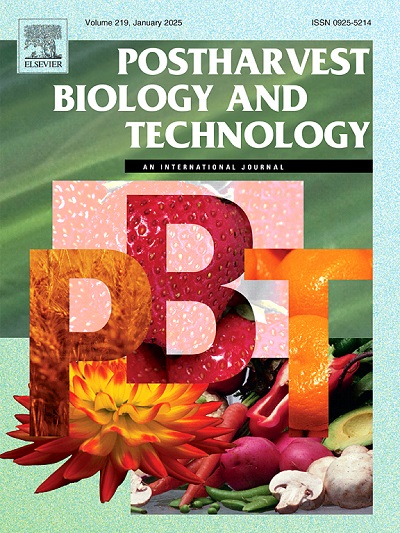Postharvest fragrance dynamics of different scented cut lilies: Insights from HS–SPME–GC–MS and electronic nose
IF 6.4
1区 农林科学
Q1 AGRONOMY
引用次数: 0
Abstract
Lilies (Lilium spp.) are important scented cut flowers, with fragrance being one of their most crucial ornamental traits. However, there are few reports on the rapid and efficient detection of postharvest fragrance quality in cut lilies. This study evaluated the floral scents of ten cut lily cultivars at four stages of aging using HS–SPME–GC–MS and an electronic nose. A total of 51 volatile organic compounds (VOCs) were detected by HS–SPME–GC–MS. Monoterpenoids were the predominant compounds in the fragrances of 'White Present', 'Bai Xue Gong Zhu', 'Manissa', 'Sorbonne', 'Touchstone', 'Robina', and 'Yelloween', while benzenoids/phenylpropanoids were predominant in 'Cali', 'Roselily Isabella', and 'Wanxia'. The electronic nose sensors W1W, W2W, and W5S were more sensitive to the floral scents of these cut lily cultivars. Correlation analysis indicated good consistency between the GC–MS and E–nose detection results (r = 0.79, p < 0.01). PLS–DA and Random Forest analyses highlighted (E)-β-ocimene, methyl benzoate, eucalyptol, and sensors W2S, W1S, W3S, and W2W as critical elements for differentiating fragrance quality at various stages of cut lilies. Furthermore, PLS regression analysis revealed a significant positive correlation between the W2W sensor and key VOCs, including (E)-β-ocimene, α-terpinene, α-phellandrene, terpinolene, β-myrcene, allo-ocimene, creosol, and cosmen. Additionally, W3S and W6S sensors showed strong positive correlations with methyl tiglate. These sensors can serve as potential markers for the corresponding compound concentrations, indicating that monitoring these sensor responses can rapidly detect the important fragrance compounds in cut lilies. The results provide a potential method for the efficient and rapid detection of postharvest floral scent quality in cut lilies. Utilizing the real-time detection advantage of the electronic nose can enhance the efficiency of postharvest fragrance quality detection in cut lilies by several orders of magnitude.
求助全文
约1分钟内获得全文
求助全文
来源期刊

Postharvest Biology and Technology
农林科学-农艺学
CiteScore
12.00
自引率
11.40%
发文量
309
审稿时长
38 days
期刊介绍:
The journal is devoted exclusively to the publication of original papers, review articles and frontiers articles on biological and technological postharvest research. This includes the areas of postharvest storage, treatments and underpinning mechanisms, quality evaluation, packaging, handling and distribution of fresh horticultural crops including fruit, vegetables, flowers and nuts, but excluding grains, seeds and forages.
Papers reporting novel insights from fundamental and interdisciplinary research will be particularly encouraged. These disciplines include systems biology, bioinformatics, entomology, plant physiology, plant pathology, (bio)chemistry, engineering, modelling, and technologies for nondestructive testing.
Manuscripts on fresh food crops that will be further processed after postharvest storage, or on food processes beyond refrigeration, packaging and minimal processing will not be considered.
 求助内容:
求助内容: 应助结果提醒方式:
应助结果提醒方式:


